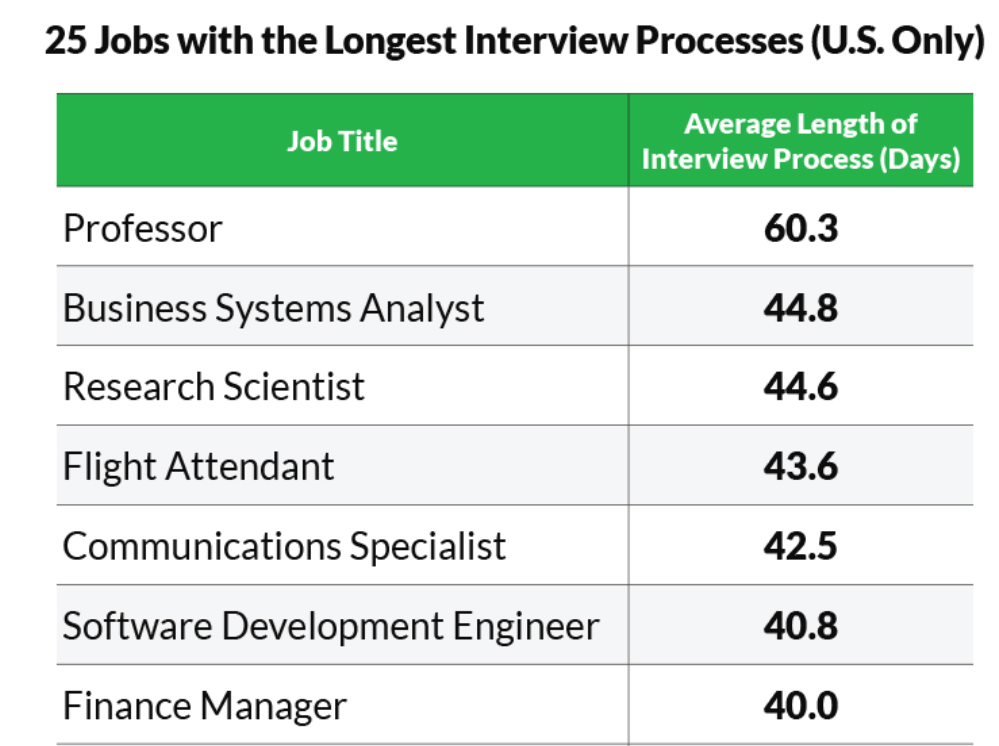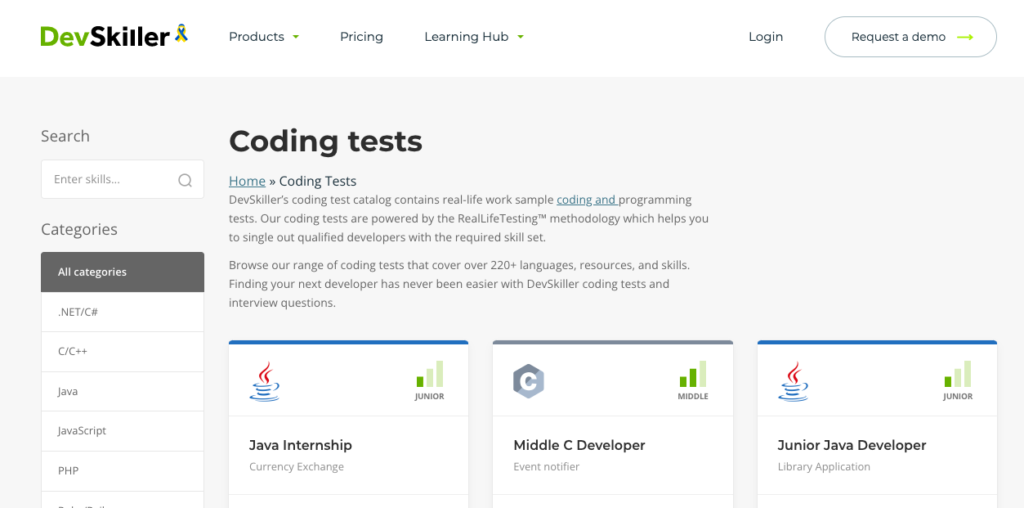
Pre-employment testing: the all in one guide

Pre-employment testing is a standardized and objective way of collecting candidate data in the hiring process. The purpose of pre-employment testing is to verify the skills, capabilities, and personality traits of prospective employees.
The benefits of various pre-employment testing methods

The American Management Association (via Criteria Corp) did a study of pre-employment testing. They found 70% of companies do some sort of job skill testing. 46% of them also use personality or psychological tests. 41% rely on some form of basic literacy and math skill tests to support their decision.
Source: The American Management Association (via Criteria Corp)
The information gathered with pre-employment testing must be relevant to the job. This is the only way it is meaningful. In other words, the assessment has to provide relevant information on the candidate’s ability to perform this particular job. In the context of software developers who you hire to code, it makes sense to assess their ability to code. Unfortunately, many companies are still using algorithmic puzzles. Whiteboard interviews are also common for pre-employment testing. These may tell you whether someone is good with puzzles or can recall things off the top of their head. They don’t provide you with the information whether they’re good at writing code.
Pre-employment testing is especially important for jobs requiring an advanced skillset. They are also ideal for jobs with a long hiring process. These include professors, business systems analysts, research scientists, flight attendants, communication specialists, and software development engineers.
According to Glassdoor, software development engineers take on average 40.8 days in the United States. This is a very long time. The time it takes to hire one is strongly affected by the pre-employment testing methods employed.

Source: Glassdoor
Being a tech recruiter is a tall task because the quality of your work is often defined solely by the final result. You could be great at sourcing and interviewing your candidates. Those skills don’t make a difference if you don’t hire the right person. An even worse outcome is to hire the wrong one. Nobody wants that. Devoting a lot of time to a promising candidate who gets poached by your competitor or simply loses interest in you is frustrating, to say the least.
Types of pre-employment testing
There are a few ways to evaluate a candidate before employing them:
- Job knowledge tests
- Skills assessment tests
- Aptitude tests
- Integrity tests
- Cognitive ability tests
- Personality tests
- Emotional intelligence tests
- Physical ability tests
- Drug tests
- Background check tests

The types of assessment depend on the role you want to fill. As an example, “sociability and accommodation do in fact predict success in customer service environments, and in management and leadership positions.” These traits are less important for other roles. What are the top 10 qualities of a good developer? You can find out in this post by Tom Winter.
Validity and relevance
According to OutMatch, “for a pre-employment assessment to be valid, it must meet two conditions:
- Ask questions that are relevant to the job (face validity)
- Prove a correlation between assessment scores and job performance (criterion validity)”
The tests should also be relevant, which means they should produce similar results under similar conditions.
The predictive validity of pre-employment testing
A study by The National Bureau of Economic Research (NBER Working Paper No. 21709) “finds that relying on pre-employment test scores does a better job of identifying workers who will have a longer tenure than allowing managers to use discretion.”
As it turns out, low-skill service sector employees evaluated by the machine stayed employed 15% longer than those not rated by a machine. The study also looked at cases where managers decided to override the algorithmic judgment. The results suggested that “exercise of discretion is strongly correlated with worse outcomes.”

Source: NBER
Impact on Time to Hire
Pre-employment tests make the hiring process longer. This is one of the biggest problems of tech recruitment these days. One of the fastest ways to speed it up is to use an adequate form of pre-employment testing. This is where you essentially screen the skills necessary to perform the job. Luckily, technology provides great opportunities to integrate pre-employment into your hiring process. It doesn’t even add a massive amount of time.
There are a few ways to screen skills before employing someone. Here is a short explanation of how many days various screening methods add to the hiring process.
| Method | Average Number of Days Added to the Hiring Process |
| Phone Interview | +6.8 to +8.2 days |
| One-on-One Interview | +4.1 to +5.3 days |
| Group Panel Interview | +5.6 to +6.8 days |
| Presentation | +2.7 to +4.2 days |
| IQ Intelligence Test | +2.6 to +4.4 days |
| Job Skills Test | +0.6 to +1.5 days |
| Personality Test | +0.9 to +1.3 days |
| Drug Test | +0.3 to +0.8 days |
| Background Check | +3.1 to +3.4 days |
Source: Glassdoor Economic Research, “Why Is Hiring Taking Longer? New Insights from Glassdoor Data,” by Dr. Andrew Chamberlain
Looking at this data, it’s worth reassessing your pre-employment testing methods. Audit your current screening setup and ask yourself the following questions:
- Are all the activities in the right order?
- Do the activities requiring more time happen before or after less time-consuming ones? For example, do you run a job skills test first and then invite people to the interview?
- Should you add any methods to your process?
- Are any of the tests redundant?
A general rule is that automated screening methods should come before methods requiring more human interaction. Think face to face interviews. The reason for that is simple: you should devote your time only to viable candidates. That said, phone interviews tend to come before other forms of screening. This is to create rapport with the candidate and check whether you even want to start the whole pre-employment testing cycle.
Experiment and move things around. Remember to track the key recruitment KPIs. To make this easier, we’ve prepared a handy recruitment KPI cheat sheet.
DOWNLOAD THE RECRUITMENT KPI CHEAT SHEET
The best pre-employment screening methodology for tech candidates: RealLifeTesting™
RealLifeTesting™ is a methodology that has an immense advantage over whiteboard tests and algorithmic puzzles. It mirrors real work. It does this by immersing the candidate in challenges similar to the ones they’d face if hired.
Thanks to this methodology, our programming tests help you identify top performers. They go beyond only testing languages. Instead, they go deeper by testing frameworks, libraries, and databases with the main focus on the final result.
Why is this so important? In software development, there are many ways of arriving at the final result. An automated and objective system of verifying coding skills allows you to assess the level of expertise (junior, mid, and senior). It also looks into the thought process of the candidate. You can choose from a wide selection of tasks. They all test the candidate’s coding skills thoroughly. These include programming tasks, multiple-choice questions, SQL, DevOps, QA, and code review tasks.
You can find them in our coding test catalog. Here’s what it looks like:

By selecting tests dedicated to each skill, you can screen .NET/C#, Android, Blockchain, C/C++, Data science, DevOps, GO, HTML/CSS, iOS, Java, JavaScript, PHP, Python, Ruby/Rails, Scala, Security, and SQL skills thoroughly.
One of the most valuable benefits of RealLifeTesting™ is that it allows developers to use their favorite resources while being tested. Candidates work in a natural programming environment. This is achieved by either cloning the project GIT repository to their favorite IDE or using our browser IDE.
Conclusion
There are a few pre-employment test types. In the case of the tech industry, the testing is the subject of a heated debate. It’s up to you to decide whether you want to screen tech skills in a relevant and valid way or want to ask candidates random questions with no predictive validity.
Image credit: Andrea Piacquadio from Pexels




